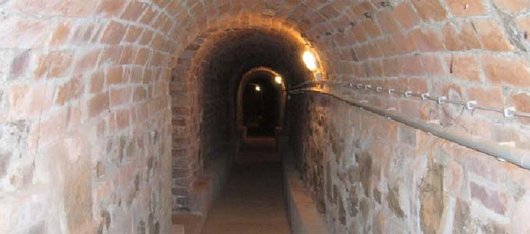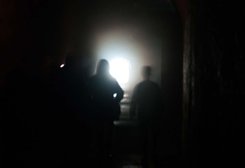With the underground hill cellar world, the Muldestadt has a unique structure. The constant cellar temperatures in the approximately 50 main and side cellars played a significant role in the excellent reputation of Eilenburger beer from the 16th to the 20th century. To date, the unique cavities in their extent have not been fully explored.
In GDR times, the unique hill cellar system fell into oblivion. After the turnaround, around one million marks were put into the safety of the building. The Bergkeller can today be visited on request by groups of visitors. Information can be found in the museum, Tel. 03423 652-222.
The dates of the public hill cellar tours are published on the website of the city museum.
What else there is to report from the underworld
In about eight centuries, a building was built in the hill of Eilenburg. Generations of Eilenburgers have been involved in this gigantic, brick-built cellar system. It combines a wide passage system with large-scale storage and production halls. This underworld of Eilenburg is far from fully explored. In the upper part of the hill are the oldest facilities, built by anonymous builders remains their original purpose and the time of origin until today unclear. By 1525 build the latest the expansionof the cellars. Storage rooms for the flourishing brewing industry were urgently needed. The constant temperatures in the cellars were a big part of the excellent quality and shelf life of the Eilenburger beer. Over three centuries, the numerous caves were used by the Eilenburger brewers and changed and expanded again and again.
From 1854 began the expansion of the in the 16th and 17th centuries builded 44 main and side cellars by the association brewery and from 1879 by the brewery Landsperger. In the 1920s, four Eilenburger breweries had to close their doors in the twenties. The cellars were used from now on for storage and mushroom cultivation. The old deep water well required for beer production was closed. Between 1943 and 1945, the hall-like cellars served the Eilenburger Motoren-Werke as a production site for aircraft parts on behalf of the Junkers-Werke in Dessau. Hundreds of forced laborers worked here underground for the German armaments industry.
In April of 1945, the hill cellars were used as a refuge for about 4500 Eilenburger before the US grenades, layed Eilenburg in ruins and ash. Hundreds of Eilenburgers have saved the lives of the protective cellars. After 1945, the cellars were again used for storage and mushroom cultivation. However, the number of users has been decreasing and the unique hill system has been forgotten. Conservation measures were missing, and so the building began to expire. Finally, the whole system should just be filled. In March 1989, at the request of an individual, the hill cellar was placed under protection. With the turn of the political situation measures were taken, which should serve the preservation of the enormous monument. The building measures and value preservations give the visitor a glimpse of the enormous cellar and awaken a touch of the mysterious and adventurous spirit for further exploration.




